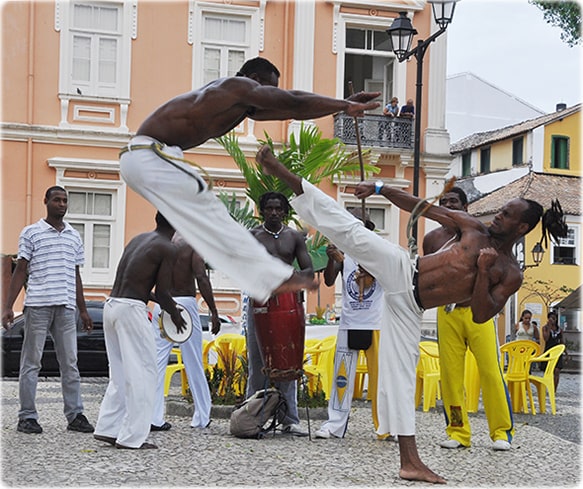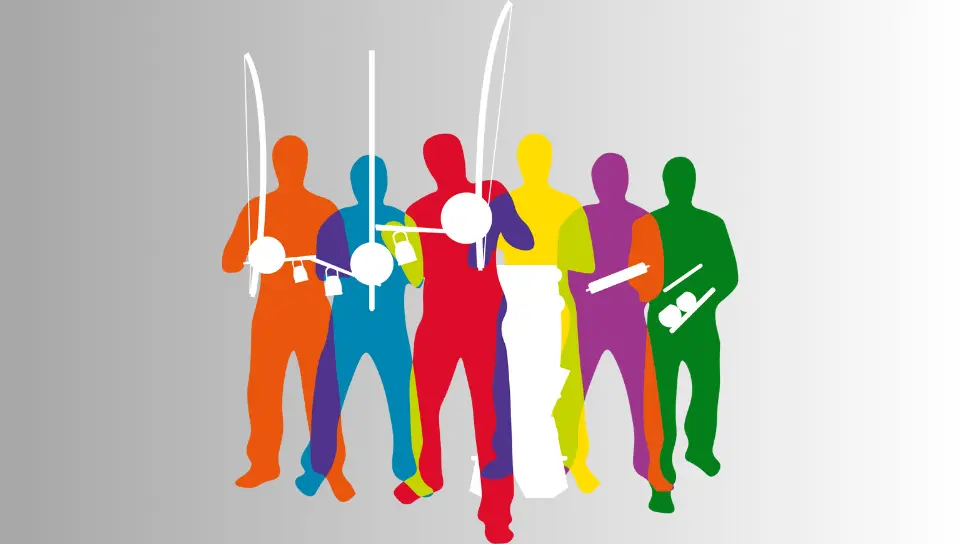INTRODUCTION TO CAPOEIRA REGIONAL
Capoeira Regional is probably the best-developed Brazilian cultural expression. It’s a dance and a martial art, it’s a danced game, it’s a danced fight, which forms a spectacle full of grace for those watching.
Practitioners of this art are incredibly agile and stand out for their ability to incorporate Capoeira into their daily lives. It is like a part of their routine and their culture, much more intensely than any other martial art.
WHAT IS CAPOEIRA REGIONAL?
Capoeira Regional is a form of expression that has modernized and catalogued many of the movements of the old capoeiristas.
Capoeira Regional originally took shape through the efforts of Manoel dos Reis Machado, who came to be known worldwide as Mestre Bimba.
By combining the knowledge of two arts that were important to his people, Mestre Bimba was able to give life to a style that has become a traditional trademark of Bahia.
See Also – Capoeira moves
HISTORY OF CAPOEIRA REGIONAL
In 1890, due to a political decision, all the archives relating to the time of slavery in Brazil were burned and much of the history was lost.
At that time, Mestre Bimba was already doing important work to preserve the culture of his people and keep alive the traditions passed down through generations.
This effort culminated in the decision to unite and rescue knowledge from different associated movements, mainly Capoeira Angola and Batuque. Initially Mestre Bimba called it “Luta Regional Baiana”, which was a way of escaping the persecution of Capoeira.
Mestre Bimba dedicated his life to perfecting and passing on his knowledge of this new form of Capoeira. It came to be called Capoeira Regional and over time became a worldwide influence.
See Also – Capoeira Rules and Fundamentals
CAPOEIRA REGIONAL INSTRUMENTS
Capoeira is undoubtedly the martial art with the strongest connection between its movements and music.
Capoeira Regional has always been highly musicalized and its earliest origins in the senzala have always been inspired by African dances and music. This combination cannot be undone, as Capoeira would not exist without music.
For this reason, there is a set of instruments that have become increasingly important to the practitioners and the culture of Capoeira Regional.
See Also – Origin and History of Capoeira
BERIMBAU
Whenever you think of Capoeira, you think of Berimbau. The truth is that the instrument was born more than 15,000 years ago.
It has been used in different parts of the world by people who have never met.
But for all intents and purposes, the Berimbau and the
Capoeira is a perfect marriage, the sounds produced by this instrument are unparalleled in their musicality.
They complement each other and combine perfectly in the intensity of Capoeira rodas.
CAXIXI
The Caxixi was probably an indigenous contribution. It’s a small basket with seeds in it.
Its sound is very reminiscent of the sounds used by various tribes in their fertility rituals.
ATABAQUE
The Atabaque came straight from African traditions where it plays an important role in Candomblé. In Capoeira Regional it has the main function of marking the rhythm.
PANDEIRO
Sharper than the Atabaque, the Pandeiro has a rich history around the world.
The instrument is of Asian origin, but first became popular in Europe, where it was used to celebrate weddings.
It was brought to Brazil by the Portuguese and was later adopted by samba and Capoeira Regional.
AGOGÔ
Being an instrument of African origin, its main function is to create a counterpoint to the melody formed by the Berimbau and the Atabaque.
When played on its own it doesn’t have much prominence, but within Capoeira Regional it becomes part of something much bigger in the music.
RECO-RECO
It is not known where this instrument originated, but it is present in many parts of the world.
Wherever people gather to celebrate, there will always be an instrument derived from Reco-Reco.
For Capoeira Regional he brings a variety of vibrations that are unique and give a new flavor to each song.
CHARACTERISTICS OF CAPOEIRA REGIONAL
Capoeira Regional is known and differentiated by its fast and loud moves, most of which are based on spins and jumps. These are the basis for the application of blows that are capable of knocking out anyone who enters unnoticed. Anyone who doesn’t know how to measure their game and exchange potential with their opponent is also knocked out.
See also – Mestre Pastinha’s Capoeira Angola
CAPOEIRA REGIONAL MOVES

Below are the moves most commonly used in rodas and taught by groups that maintain the Capoeira Regional tradition.
- Armed;
- Complained;
- Half-moon compass;
- Half moon from the front;
- Front plate;
- Back plate;
- Band;
- Band locked;
- Scissors;
- Hammer;
- Crossed hammer;
- Aú;
See more – All about Capoeira: Origin, Styles, Blows and Rules
VIDEO: MESTRE BIMBA – CAPOEIRA ILUMINADA
To complement your knowledge of Capoeira Regional and Mestre Bimba, we recommend the video below.
CONCLUSION
Capoeira Regional is the style of Capoeira that was consolidated as a Martial Art by the great Mestre Bimba. Its fast and aggressive movements are its greatest characteristic.
We hope you’ve learned and answered all your questions about Capoeira Regional.
Share the article on your social networks and help expand our sport, good luck and axé to all!
